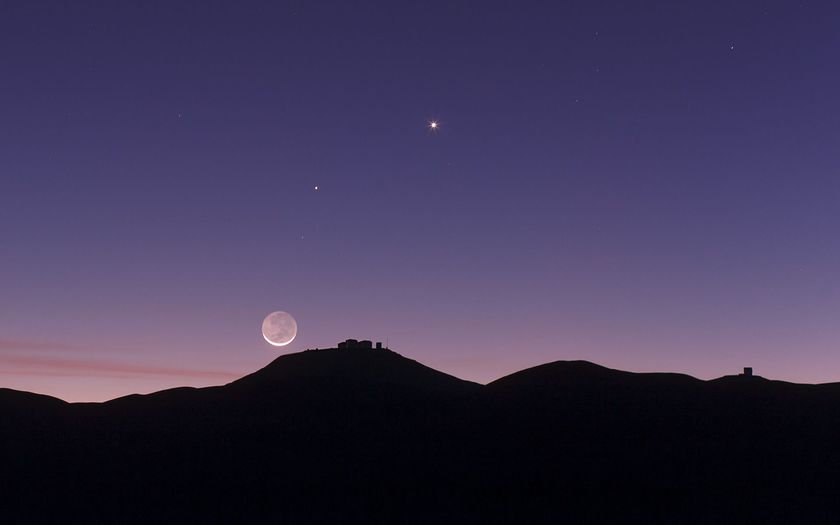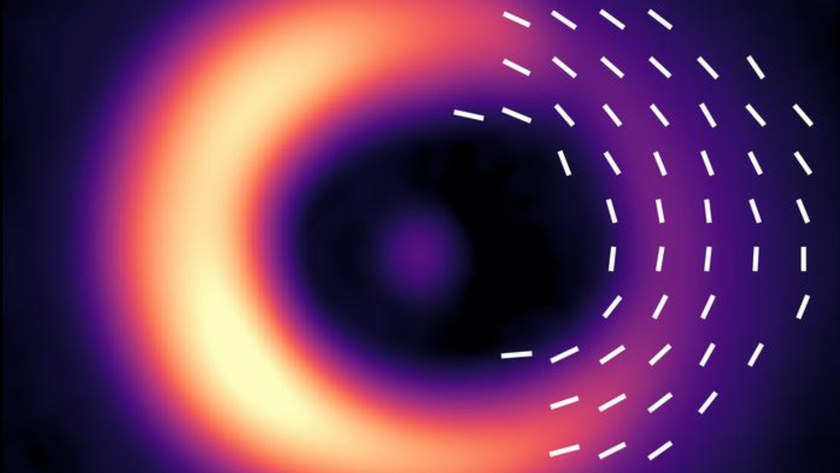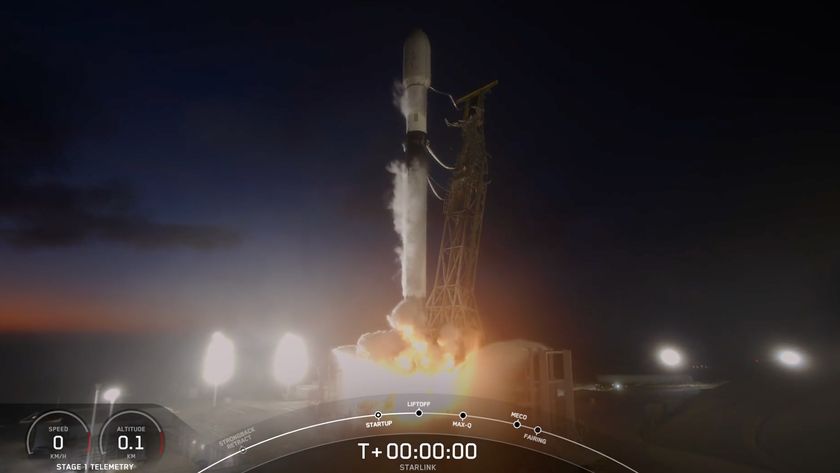Asteroid to Give Earth Record-Setting Close Shave on Feb. 15
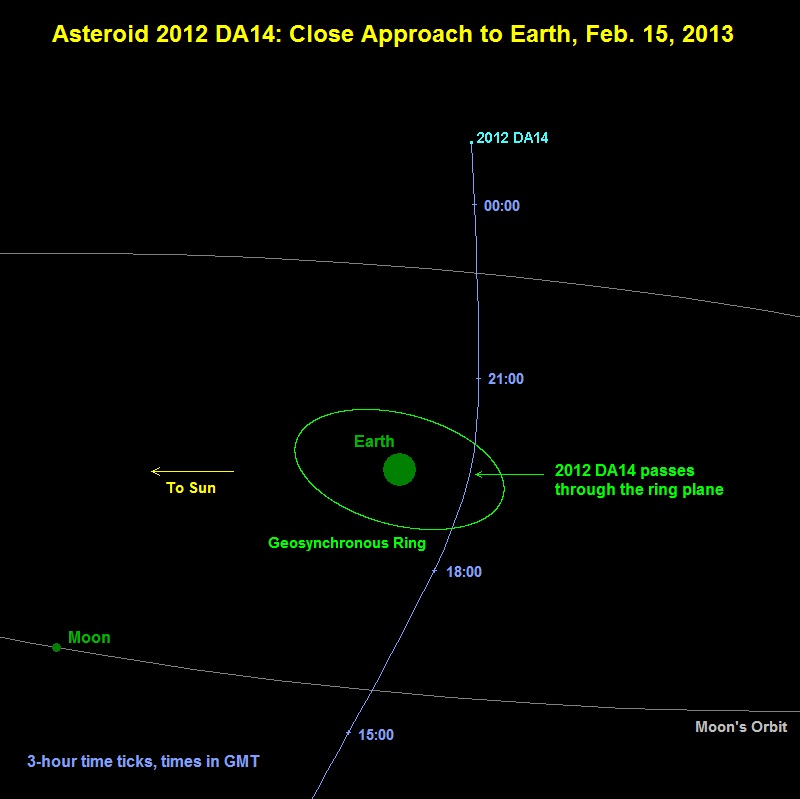
Editor's Note: For the latest news, photos and video of asteroid 2012 DA14 and its Feb. 15 Earth flyby, visit SPACE.com's special report here:
Asteroid 2012 DA14 Earth Flyby of Feb. 15: Complete Coverage
An asteroid half the size of a football field will give Earth the ultimate close shave this month, passing closer than many satellites when it whizzes by, but it won't hit the planet, NASA scientists say.
The asteroid 2012 DA14 will fly by Earth on Feb. 15 and zip within 17,200 miles (27, 680 kilometers) of the planet during the cosmic close encounter. The asteroid will approach much closer to Earth than the moon, and well inside the paths of navigation and communications satellites.
"This is a record-setting close approach," Don Yeomans, the head of NASA's asteroid-tracking program, said in a statement. "Since regular sky surveys began in the 1990s, we've never seen an object this big get so close to Earth."
Asteroid 2012 DA14 was discovered last year by an amateur team of stargazers at the La Sagra Sky Survey observatory in Spain. Yeomans stressed that, while the asteroid's approach bring it closer than the geosynchronous satellites orbiting 22,245 miles (35,800 km) above Earth, 2012 DA14 poses no threat of a deadly collision with the planet. [See Don Yeomans Explain Asteroid 2012 DA14 (Video)]
"2012 DA14 will definitely not hit Earth. The orbit of the asteroid is known well enough to rule out an impact," Yeomans, who heads the Near-Earth Object Program at NASA's Jet Propulsion Laboratory in Pasadena, Calif. He added that the odds it will slam into a satellite are "extremely remote."
A fairly typical asteroid like 2012 DA14 — which measures 150 feet (45 meters) across — zips by Earth about every 40 years, but only strikes every 1,200 years, Yeomans estimated, and the impact of such an object would not be catastrophic over a wide area.
Get the Space.com Newsletter
Breaking space news, the latest updates on rocket launches, skywatching events and more!
Asteroid 2012 DA14 is about the same size of the object that exploded in the atmosphere above Siberia in 1908, leveling hundreds of square miles in what scientists now call the "Tunguska Event," NASA officials explained.
Yeomans said an asteroid similar in size to 2012 DA14 slammed into Earth 50,000 years ago to create the famed Meteor Crater in Arizona. But the Meteor Crater asteroid was made of iron, which made its impact especially strong.
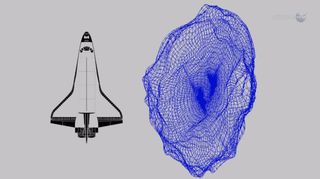
When asteroid 2012 DA14 zooms by Earth, NASA scientists will be tracking the space rock closely. The space agency plans to use its Goldstone radar in California's Mojave Desert to follow the asteroid from Feb. 16 to Feb. 20. The observation campaign should help astronomers build a 3D map asteroid 2012 DA14, as well as refine estimates on the space rock's shape, spin and reflectivity, NASA officials said.
Since the object will be moving across the sky so fast, only the most experienced amateur astronomers are likely to catch its close pass. But it could be a challenge.
"The asteroid will be racing across the sky, moving almost a full degree (or twice the width of a full moon) every minute," Yeomans said. "That's going to be hard to track."
Follow SPACE.com on Twitter @Spacedotcom. We're also on Facebook and Google+.
Join our Space Forums to keep talking space on the latest missions, night sky and more! And if you have a news tip, correction or comment, let us know at: community@space.com.

Space.com is the premier source of space exploration, innovation and astronomy news, chronicling (and celebrating) humanity's ongoing expansion across the final frontier. Originally founded in 1999, Space.com is, and always has been, the passion of writers and editors who are space fans and also trained journalists. Our current news team consists of Editor-in-Chief Tariq Malik; Editor Hanneke Weitering, Senior Space Writer Mike Wall; Senior Writer Meghan Bartels; Senior Writer Chelsea Gohd, Senior Writer Tereza Pultarova and Staff Writer Alexander Cox, focusing on e-commerce. Senior Producer Steve Spaleta oversees our space videos, with Diana Whitcroft as our Social Media Editor.
